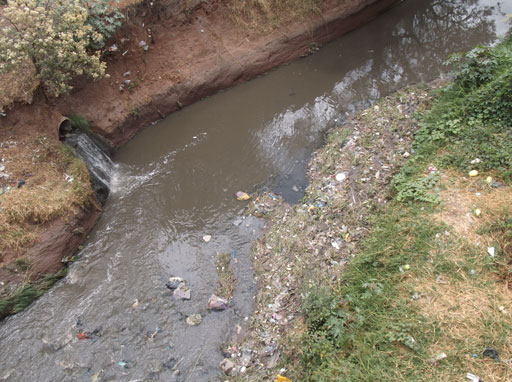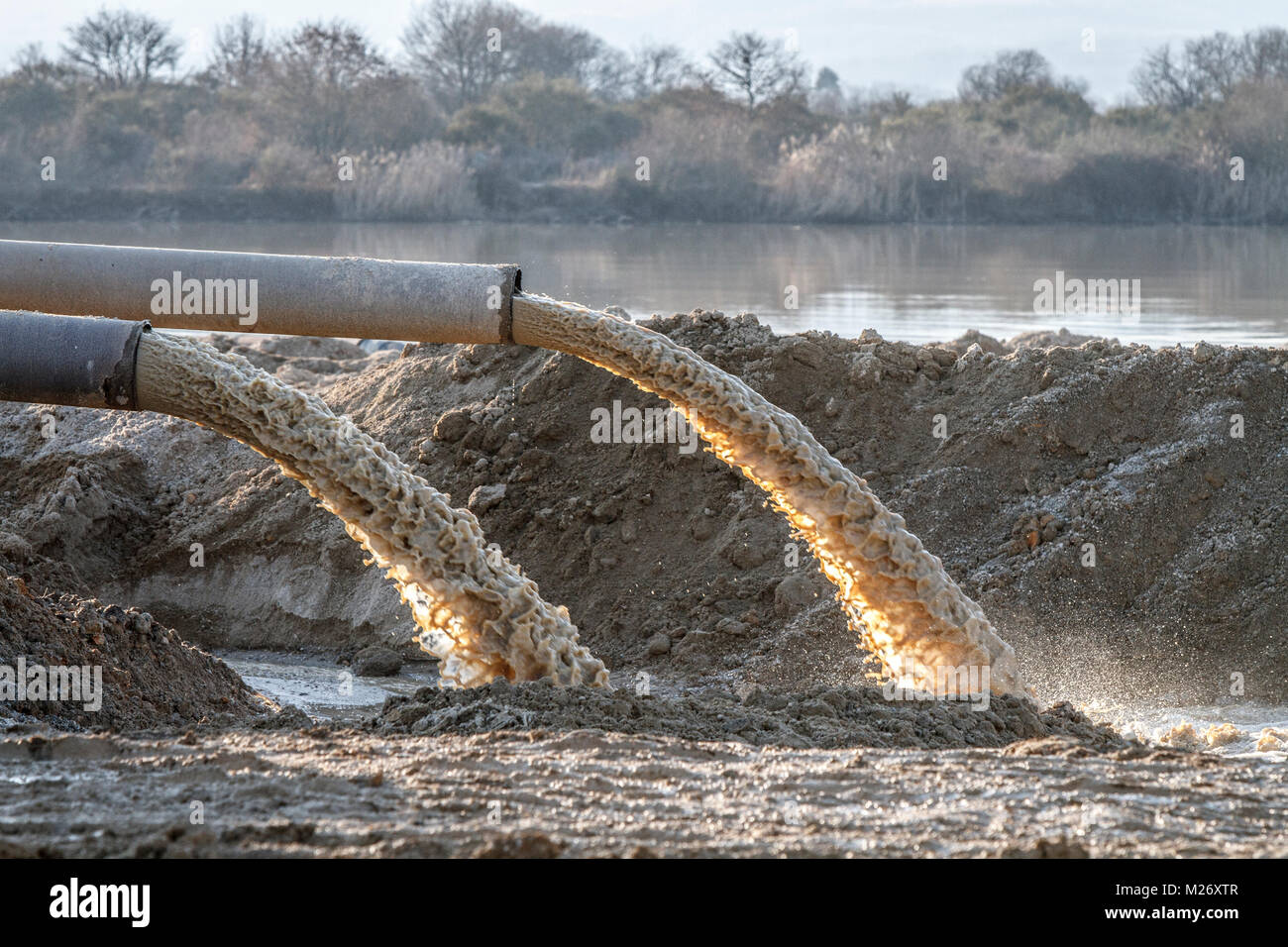Cutting-edge Industrial Wastewater Treatment Solutions: Shielding the Atmosphere
Cutting-edge Industrial Wastewater Treatment Solutions: Shielding the Atmosphere
Blog Article
How Fluid Garbage Disposal Functions: A Thorough Introduction of Methods and Technologies Used

Overview of Liquid Waste Types
The intricacy of fluid waste kinds requires a comprehensive understanding of their qualities and ramifications for disposal. Fluid waste can generally be categorized into several types, consisting of commercial, local, agricultural, and contaminated materials. Each group exhibits unique buildings, needing particular management techniques to minimize environmental and health and wellness risks.
Industrial fluid waste stems from manufacturing procedures and typically includes a variety of pollutants, such as heavy metals, solvents, and organic substances. Municipal fluid waste, mainly making up wastewater from families and business establishments, contains raw material, nutrients, and virus (industrial wastewater treatment). Agricultural fluid waste, including runoff from farms, might include fertilizers, pesticides, and pet waste, presenting risks to water high quality and communities
Harmful liquid waste is defined by its poisoning, reactivity, or possible to trigger damage. Recognizing these varied liquid waste types is important for establishing effective disposal approaches and ensuring compliance with ecological policies.
Physical Treatment Techniques

Testing is the preliminary step, where bigger particles and particles are gotten rid of from the fluid waste using screens or grates. In sedimentation containers, much heavier bits resolve at the base, developing a sludge layer, while the made clear liquid can be more dealt with.
Purification is an additional important approach that includes passing the fluid through permeable materials, such as sand or membrane layers, to capture smaller particles. This action boosts the top quality of the liquid, making it suitable for subsequent treatment procedures.

Chemical Treatment Techniques
Chemical therapy methods are necessary for properly handling fluid waste, specifically in addressing dissolved and colloidal impurities that physical techniques may not adequately get rid of. These strategies utilize numerous chemical representatives to neutralize, precipitate, or transform dangerous compounds right into much less damaging forms.
One usual technique is coagulation and flocculation, where chemicals such as alum or ferric chloride are contributed to advertise the gathering of put on hold fragments. This procedure boosts sedimentation, enabling for less complicated removal of the resulting sludge. In addition, oxidation processes, employing agents like chlorine or ozone, are used to break down complicated organic compounds and pathogens, providing the waste safer for discharge or further therapy.
Neutralization is an click for more info additional important strategy, which readjusts the pH of acidic or alkaline waste streams to neutral levels, preventing possible damage to downstream systems and the environment. Furthermore, progressed oxidation processes (AOPs) use mixes of oxidants and ultraviolet light to break down consistent contaminants, attaining a greater degree of therapy performance.
Biological Treatment Procedures
Biological treatment procedures play a critical duty in the management of liquid waste by using bacteria to disintegrate organic matter and decrease contaminant levels. These processes can be generally categorized into anaerobic and cardio therapies, each employing certain microbial neighborhoods to accomplish effective waste degradation.
Cardiovascular treatment includes the use of oxygen to promote the failure of natural materials by germs. This process is commonly executed in turned on sludge systems, where oygenation storage tanks provide a helpful environment for microbial growth, leading to the oxidation of organic contaminants. The resultant biomass can be divided from dealt with effluent through sedimentation.
In contrast, anaerobic treatment occurs in the lack of oxygen, depending on different microorganisms to damage down natural issue. This method is particularly advantageous for high-strength waste, as it generates biogas, a renewable resource resource, while reducing sludge production. Technologies such as anaerobic digesters are often used in community and industrial applications.
Both anaerobic and cardio organic treatments not just lessen the ecological impact of fluid waste yet additionally promote resource recuperation, making them crucial parts of lasting waste monitoring strategies. Their adaptability, efficiency, and performance support their extensive implementation across various fields.
Arising Technologies in Disposal
Innovative techniques to liquid garbage disposal are swiftly developing, driven by developments in technology and a boosting emphasis on sustainability. Amongst these emerging technologies, membrane layer bioreactors (MBRs) have obtained grip click to investigate for their capacity to incorporate biological therapy with membrane filtration, causing high-grade effluent that can be reused in various applications. MBRs enable smaller footprints and a lot more reliable procedures compared to conventional systems.
Another encouraging growth is the use of anaerobic food digestion incorporated with nutrient healing innovations, which not only deals with liquid waste yet also produces biogas and recuperates important nutrients like nitrogen and phosphorus. This twin advantage enhances resource efficiency and decreases ecological influence.
Additionally, progressed oxidation processes (AOPs) are being adopted for the degradation of complex organic toxins. These methods use powerful oxidants and stimulants to break down impurities at the molecular degree, providing an extremely effective remedy for challenging waste streams.
Additionally, the assimilation of artificial knowledge and device understanding in waste administration systems is enhancing functional effectiveness and anticipating maintenance, leading to reduced prices and boosted ecological conformity. These technologies mirror a substantial change towards more effective and sustainable fluid garbage disposal techniques.
Final Thought
In verdict, efficient liquid waste disposal requires a detailed understanding of different techniques and innovations. By continuously progressing these methodologies, it becomes possible to Read Full Report resolve the expanding challenges connected with liquid waste, eventually adding to environmental protection and source recovery.
Liquid waste disposal is an important facet of environmental management, requiring a thorough understanding of various methods and innovations tailored to various waste types. Fluid waste can extensively be classified into a number of types, including industrial, municipal, agricultural, and dangerous waste. Agricultural fluid waste, consisting of drainage from farms, may consist of fertilizers, pesticides, and pet waste, positioning threats to water top quality and environments.
Different physical therapy techniques play a critical role in managing liquid waste effectively - industrial wastewater treatment.In verdict, effective liquid waste disposal necessitates a detailed understanding of different techniques and innovations
Report this page